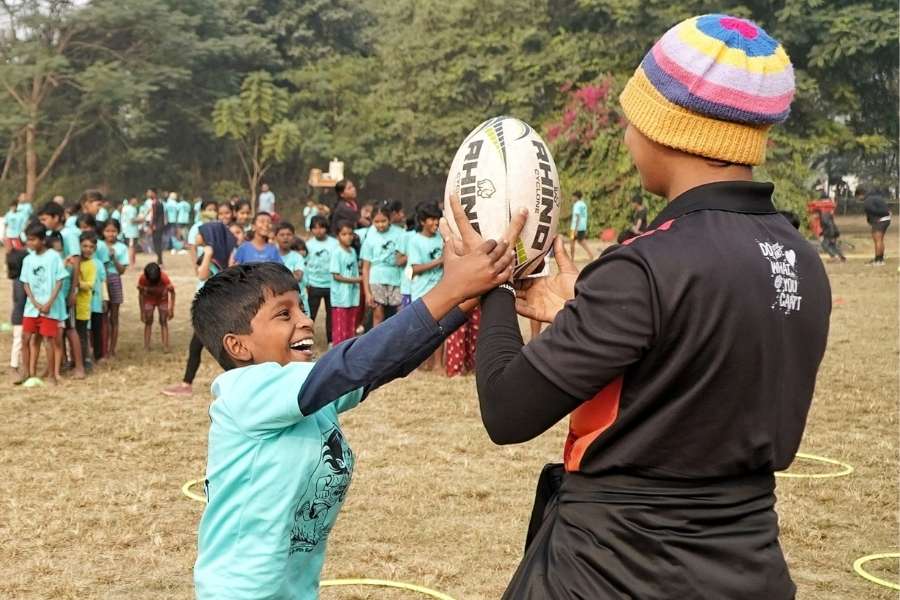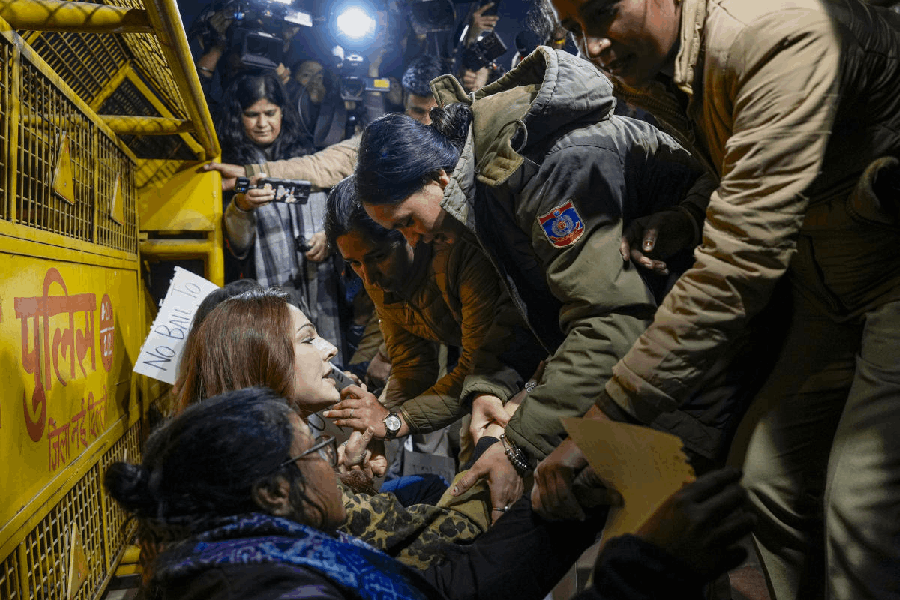
Tomar dekha nai re, Tomar dekha nai... These lyrics from the addictive, folksy blues number from the 1990s Bengali band Bhoomi, could, today, well be the epitaph of Bangla bands.
Even until 10 years ago, Bangla bands were the "it" thing. Be it Puja, New Year or just a Friday evening do at one of the city clubs, songs like Orom Takiyo Na , Phagunero Mohonaye, Dudh Na Khele , Gadhatake Jol Dao were on the menu. Not anymore.
"They have no following," points out Saubhik Majumdar, who looks after marketing at Aamar 106.2 FM, the Calcutta-based Bengali radio station that once played an important role in promoting this genre of music. Even the show count of the popular bands has dropped by more than half. Surojit Chatterjee, erstwhile lead singer of Bhoomi, remembers a time when he used to do shows each and every day of the month, especially in the Christmas-to-New-Year stretch. "I remember a time when I did 31 shows in January," he says.
That sort of following and popularity is now history; the fizz has gone.
In 2012, Chatterjee formed his own band, Surojit O Bondhura, after parting ways with Bhoomi. Other bands have also come up in recent times. So, clearly, what ails Bangla bands today is not withering numbers, but withering musical impact.
"New bands have not been able to create an identity of their own," says Soumitra Ray, the lead vocalist of Bhoomi. "When we started out, Bhoomi created a wave. Our songs like Nazam, Nazam became very popular. Even now, I get requests to sing these songs wherever I go... We had a story to tell," he adds.
The first Bangla band was formed in the 1970s, after the Bangladesh liberation war. Band founder, Gautam Chattopadhyay, who is said to have been involved in the Naxal movement, took the name of his band - Mohiner Ghoraguli - from a poem by modernist poet Jibanananda Das. The band's piercingly poignant lyrics - think Bhalobashi Picasso Bunuel Dante/Beatles Dylan ar Beethoven shunte.../Tobuo kichui jano/Bhalo je lage na kano/Udashi pother majhe/Mon pore thake jano... - made an impression on Bengali music lovers. The band itself disintegrated after a few years, its contribution didn't.
In its next avatar, in the 1990s, many more Bangla bands came up - Bhoomi, of course, Chandrabindoo, Cactus, Fossils, Lakkhichhara, KrossWindz. At the time, the Bengali music industry was going through its worst phase, at least commercially; whatever creative vacuum existed was filled by these bands. The phenomenon lasted till 2008.
And then the wheels started to turn again. Bengali film music was on the ascendant once more. "Actually the sounds that we created began to be adapted by film music. So the identity of band music began to disappear," says Sidhu, the lead vocalist of Cactus. "Film producers are buying up all slots on the FM music and television channels to ensure their songs are played continuously."
Concerned over the "virtual blackout" of bands on FM channels, some band members and singers came together this January to discuss the issue. An agency was commissioned to conduct a survey to find out why FM channels were not playing band music. "The findings were startling," says Sidhu. "According to the survey, after 2010, band songs comprised less than 0.1 per cent of the total songs played. And those songs too were all old songs. On the other hand, one particular film song had been played 213 times in one week!"
FM channels are not denying any of this. "We don't play new songs of upcoming bands because there are no listeners," says Majumdar of Aamar 106.2 FM.
Debaditya Chaudhury, drummer of Lakkhichhara, points to the lack of innovation and quality. "No new band has been able to match the standards set by Bhoomi, Cactus, Chandrabindoo, Fossils and Lakkhichhara. Where is the sixth band?"
Ray of Bhoomi attributes the drop in shows to a statewide cash crunch. "A few years back, the chit fund business was active, para clubs were flush with funds and would organise regular shows. There's another reason too [for fewer shows]. We have jacked our rates, most people cannot afford to hire us. Even television channels that used to call us earlier, now call the stars of reality shows to sing our songs," he says.
Singer and National Film Award winner Rupankar Bagchi feels it is all part of a larger trend brought on by changing technology. "Even solo singers who do non-film songs have been affected. CDs don't sell and audio labels are not interested in music albums. People download music from the Internet," he says. Chatterjee of Surojit O Bondhura agrees. Barely 2,000 CDs of Bengali songs are sold in a year, according to him.
Most bands now upload their songs on YouTube or SoundCloud. Other singers like Chatterjee and Bagchi have turned to Rabindrasangeet or are busy composing songs for films.
Sidhu remains hopeful, though. "Everything in life moves in a cyclical order. Band music may have lost some of its popularity for certain reasons, but things will be better in future."
Anindya Chatterjee, co-founder and lead vocalist of Chandrabindoo, also considers the glass half full. He says, "I think band music remains, only the format has changed. Instead of listening to band music, people now listen to film music. But the new crop of film music composers and singers like Anupam Roy, Somlata Acharya and others are all byproducts of band music."
Remember (Anupam) Roy's raspy voice in the 2014 film, Chotushkone promising - Boshonto eshe geche, Boshonto eshe geche.
This may well be winter for Bangla bands, but whoever said spring's not round the corner?











